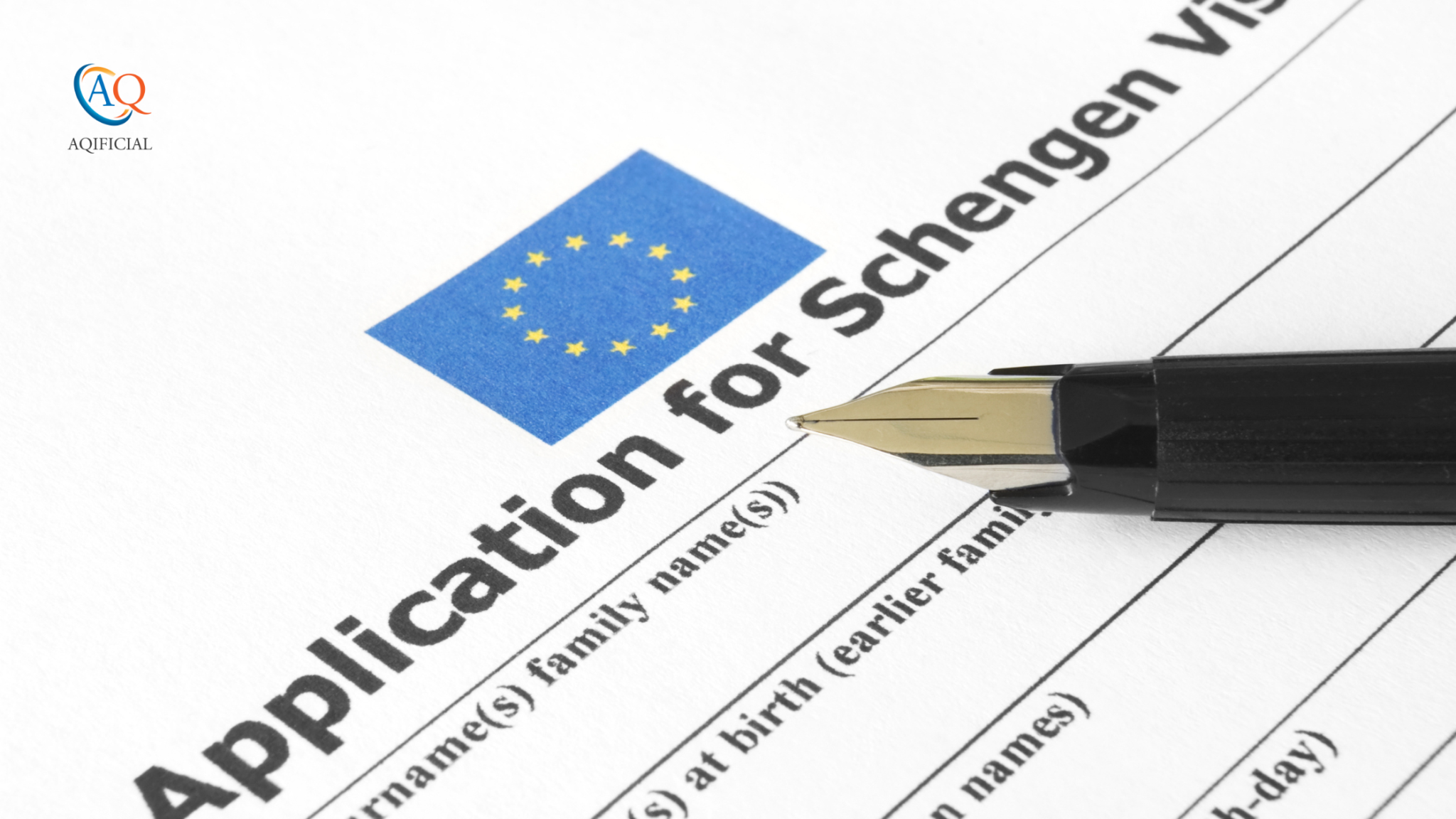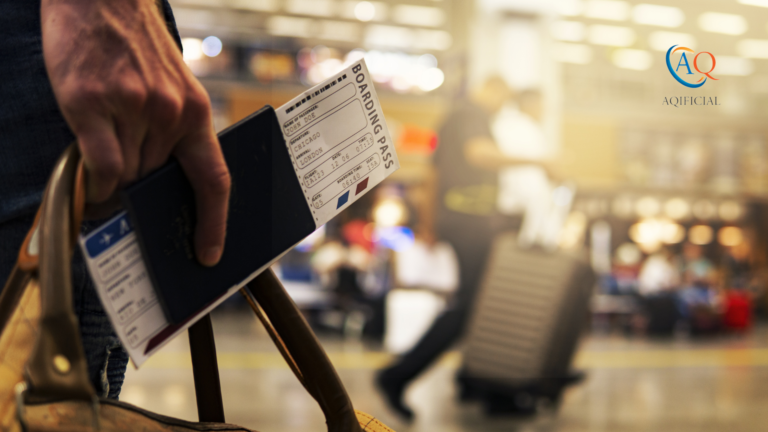Planning a trip to Europe? Then you’re probably aware of the Schengen visa – a crucial document that grants you access to 26 European countries. But the application process can be overwhelming, especially if you’re not familiar with the requirements. That’s where we come in. In this step-by-step guide, we’ll walk you through the process of applying for a Schengen visa from the UAE, ensuring that you have all the information you need to make your dream European vacation a reality. From gathering the necessary documents to filling out the application form and scheduling your appointment, we’ll break it down into simple and manageable tasks. So, whether you’re traveling for leisure, business, or education, our comprehensive guide will help you navigate the intricacies of the application process, saving you time and ensuring a smooth and hassle-free experience. Get ready to explore the enchanting cities, breathtaking landscapes, and rich cultural heritage of Europe – let’s get started on your Schengen visa journey!
Understanding the Schengen Area and Visa Requirements
The Schengen Area is a zone comprising 27 European countries that have abolished internal borders, allowing for the free movement of people within the area. To enter the Schengen Area, citizens of certain countries need to obtain a Schengen visa. This visa is issued by the embassy or consulate of the country you plan to visit first or spend the most time in during your trip. So, before you begin the application process, it’s important to determine which embassy or consulate you should apply to.
To qualify for a Schengen visa, you must meet certain requirements. These include having a valid passport,
- Demonstrating the purpose of your trip,
- Providing proof of sufficient funds to cover your stay, and
- Having travel medical insurance.
- Additionally, you’ll need to provide supporting documents such as flight reservations, hotel bookings, and a travel itinerary.
It’s crucial to carefully review the specific requirements of the country you’re applying to, as they may have additional criteria.
From where did the name Schengen originate?
Schengen, derived from the town in southeastern Luxembourg, holds significant historical significance as the birthplace of the original Schengen Agreement in 1985.
This milestone agreement was signed by France, Germany, Belgium, Luxembourg, and the Netherlands, paving the way for a borderless Europe and shaping the future of travel in the region.
Types of Schengen Visas
There are several types of Schengen visas, depending on the purpose of your trip. The most common types include:
Tourist Visa
If you’re visiting Europe for leisure purposes, such as sightseeing or visiting family and friends, you’ll need to apply for a tourist visa. This visa allows you to stay in the Schengen Area for a maximum of 90 days within a 180-day period.
Business Visa
If you’re traveling to Europe for business-related activities, such as attending meetings, conferences, or negotiating contracts, you’ll need to apply for a business visa. This visa also allows for a maximum stay of 90 days within a 180-day period.
Student Visa
If you plan to study in Europe, you’ll need to apply for a student visa. This visa allows you to stay in the Schengen Area for the duration of your studies, provided you meet the necessary requirements.
Work Visa
If you’ve secured a job in Europe, you’ll need to apply for a work visa. This visa allows you to work and reside in the Schengen Area for the duration specified by your employment contract.
It’s important to determine the type of visa that best suits your travel plans before proceeding with the application process.
Step 1: Determine the Embassy or Consulate to Apply
Before you begin the application process, you need to determine which embassy or consulate you should apply to. The Schengen visa is issued by the embassy or consulate of the country you plan to visit first or spend the most time in during your trip.
Usually, for most Schengen countries, its VFS Global center in Abu Dhabi and Dubai.
and only for Spain, its BLS in Abu Dhabi and Dubai.
If you’re visiting multiple countries with an equal duration of stay, you should apply to the embassy or consulate of the country you’ll arrive in first.
You can refer the below table to reach the official website of the embassy of the country who can guide you to the official application center the United Arab Emirates.
Schengen Country |
Visa application website of the Schengen Country |
| Austria | Website link (Austria) |
| Belgium | Website link (Belgium) |
| Croatia | Website link (Croatia) |
| Denmark | Website link (Denmark) |
| Estonia | Website link (Estonia) |
| Finland | Website link (Finland) |
| France | Website link (France) |
| Germany | Website link (Germany) |
| Greece | Website link (Greece) |
| Hungary | Website link (Hungary) |
| Iceland | Website link (Iceland) |
| Italy | Website link (Italy) |
| Latvia | Website link (Latvia) |
| Liechtenstein | Website link (Liechtenstein) |
| Lithuania | Website link (Lithuania) |
| Luxembourg | Website link (Luxembourg) |
| Malta | Website link (Malta) |
| Netherlands | Website link (Netherlands) |
| Norway | Website link (Norway) |
| Poland | Website link (Poland) |
| Portugal | Website link (Portugal) |
| Slovakia | Website link (Slovakia) |
| Slovenia | Website link (Slovenia) |
| Spain | Website link (Spain) |
| Sweden | Website link (Sweden) |
| Switzerland | Website link (Switzerland) |
Once you’ve identified the embassy or consulate, it’s essential to familiarize yourself with their specific requirements and procedures.
Each embassy or consulate may have slight variations in their application process, so it’s crucial to review their website or contact them directly for accurate and up-to-date information.
Location of VFS center in the UAE
Abu Dhabi
Dubai
Visa Application Centre Wafi Mall, 2nd Floor, Falcon, Phase 2 Umm Hurair 2 Dubai UAE
Location of BLS center (Spain Visa) in the UAE
Abu Dhabi
Dubai
Step 2: Gather the Required Documents
Now that you know where to apply, it’s time to gather the required documents for your Schengen visa application. The exact documents you’ll need may vary depending on the purpose of your trip and the country you’re applying to. However, there are certain documents that are commonly required for all Schengen visa applications. These include:
Valid passport
Your passport must be valid for at least three months beyond your intended stay in the Schengen Area. It should also have at least two blank pages for visa stamps.
Visa application form
You’ll need to fill out the visa application form of the country you’re applying to. This form can usually be downloaded from the embassy or consulate’s website.
Passport-sized photos
You’ll need to submit recent passport-sized photos that adhere to the specifications set by the embassy or consulate.
Travel itinerary
A detailed travel itinerary outlining your planned activities, including flight reservations, hotel bookings, and any other relevant travel arrangements.
Proof of accommodation
Documents such as hotel reservations, rental agreements, or an invitation letter from a host confirming your accommodation arrangements.
Proof of financial means
You’ll need to provide evidence of sufficient funds to cover your stay in the Schengen Area. This can include bank statements, sponsorship letters, or other financial documents.
Travel medical insurance
A valid travel medical insurance policy that provides coverage for medical emergencies, hospitalization, and repatriation with a minimum coverage of USD 30,000.
It’s important to carefully review the specific requirements of the embassy or consulate you’re applying to, as they may have additional document requirements. Ensure that all your documents are complete, up-to-date, and in the required format before submitting your application.
For more information on travel insurance you can check out my blog on How To Get Travel Insurance For Schengen Visa
Step 3: Fill out the Application Form
Once you have gathered all the necessary documents, it’s time to fill out the visa application form. The application form can usually be downloaded or be filled online from the embassy or consulate’s website. Make sure to read the instructions carefully and provide accurate and complete information.
The application form will ask for personal details such as your name, date of birth, nationality, and contact information. It will also require information about your travel plans, including the purpose of your trip, intended dates of travel, and details of your accommodation.
When filling out the form, take your time and double-check all the information to avoid any errors or discrepancies. Any mistakes or incomplete information could lead to delays or rejection of your visa application. Once you have completed the form, print it out and sign it before proceeding to the next step.
Step 4: Schedule an Appointment
After completing the application form and paying the application fees (in most countries cases), you’ll need to schedule an appointment at the embassy or consulate to submit your documents and attend a visa interview. The appointment can usually be scheduled online through the embassy or consulate’s website. Select a date and time that is convenient for you and ensure that you have all the required documents ready for submission.
Appointments can sometimes be in high demand, especially during peak travel seasons, so it’s advisable to schedule your appointment well in advance. It’s also recommended to arrive at the embassy or consulate a few minutes before your scheduled appointment time to avoid any delays.
Step 5: Attend the Visa Interview
The visa interview is a crucial part of the application process. During the interview, a consular officer will review your documents, ask you questions about your travel plans, and assess your eligibility for a Schengen visa. It’s important to be well-prepared for the interview and provide clear and concise answers.
To ensure a successful interview, consider the following tips:
Dress appropriately
Dress in formal or business attire to make a good impression.
Be prepared
Familiarize yourself with your travel itinerary and have a clear understanding of your purpose of visit.
Be honest
Provide truthful and accurate information during the interview.
Answer confidently
Speak clearly and confidently when answering questions.
Be polite
Maintain a respectful and professional demeanor throughout the interview.
Remember, the consular officer’s decision will be based on your interview and the supporting documents you provide. After the interview, you’ll be informed of the decision regarding your visa application.
Step 6: Track Your Application
Once you have submitted your documents and paid the visa fee, you can track the status of your application. Most embassies or consulates provide an online tracking system where you can enter your application reference number to check the progress of your visa application.
It’s important to note that visa processing times may vary depending on the embassy or consulate and the time of year. During peak travel seasons, it’s advisable to submit your application well in advance to allow for any potential delays.
If you have any concerns or questions about your application, you can contact the embassy or consulate for assistance.
Step 7: Collect Your Passport and Visa
Once your visa application has been processed and approved, you’ll need to collect your passport and visa.
Depending on the embassy or consulate, you may be required to collect it in person or choose to have it delivered to your preferred address.
When collecting your passport and visa, carefully review the details on the visa to ensure that they are accurate and match your travel plans.
If you notice any discrepancies or errors, inform the embassy or consulate immediately for correction.
Congratulations! You’re now ready to embark on your European adventure. Make sure to keep your passport and visa in a safe place and carry them with you during your trip.
Tips for a Successful Schengen Visa Application
– Start the application process well in advance to allow time for gathering documents and scheduling appointments.
– Follow the embassy or consulate’s instructions carefully and provide all required documents in the specified format.
– Double-check all the information on the application form to avoid errors or discrepancies.
– Prepare for the visa interview by familiarizing yourself with your travel plans and being confident in your answers.
– Maintain a professional and respectful demeanor during the visa interview.
– Keep track of your application status using the embassy or consulate’s online tracking system.
– Collect your passport and visa promptly once they are ready, and review the details for accuracy.
Common Mistakes to Avoid
– Waiting until the last minute to start the application process, which may lead to rushed submissions and potential errors.
– Providing incomplete or incorrect information on the application form.
– Failing to include all necessary supporting documents or not following the embassy or consulate’s document requirements.
– Neglecting to prepare for the visa interview, resulting in unclear or inconsistent answers.
– Not tracking the status of your application and missing any updates or requests for additional information.
– Forgetting to collect your passport and visa on time or not reviewing the visa details for accuracy.
Last thoughts
Applying for a Schengen visa from the UAE may seem daunting, but with the right information and careful preparation, it can be a manageable process.
By following this step-by-step guide, you’ll have the knowledge and confidence to navigate the application process successfully.
Remember to start early, gather all necessary documents, fill out the application form accurately, schedule your appointment, attend the visa interview, and track your application’s progress. With your Schengen visa in hand, you’ll be ready to explore the captivating wonders of Europe.
Bon voyage!











